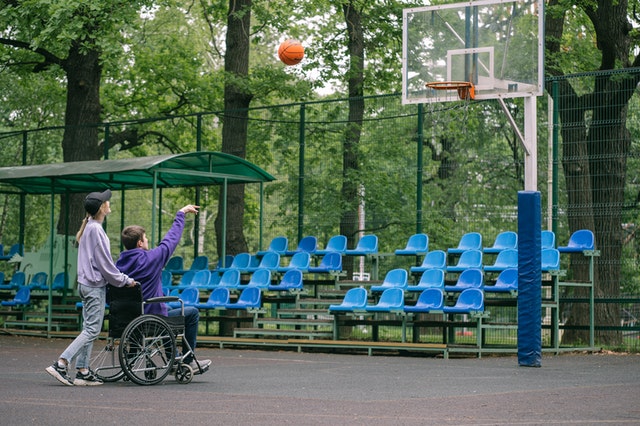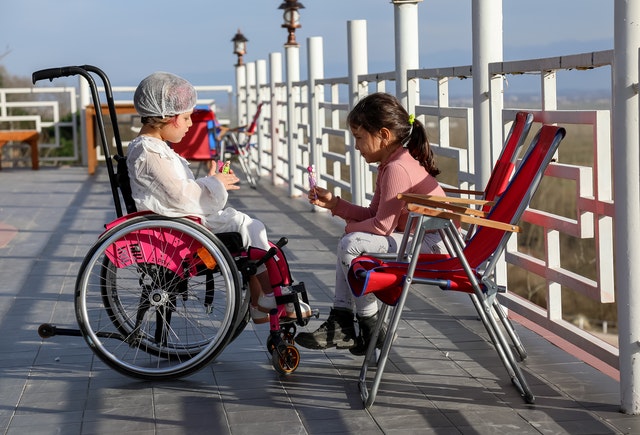While you may be familiar with disabilities and social justice activism, you might not know a lot about ableism and how to educate about it. Ableism is defined as discrimination and social prejudice against those with disabilities, based on the belief that typical abilities are superior. This prejudice can be geared at those with both mental and physical disabilities. There are so many reasons you may want to teach your children about ableism — whether you, someone in your family or even your child themselves has a disability, educating your family about the best ways to notice and combat ableism whenever you see it.
While ableism can take many different forms, there are also plenty of ways to educate your children about it so they can be prepared to include others and fight for their own inclusion in a variety of spaces. While every school, workplace, daycare, extended family and circle of friends is different, you can build onto the skills you practice at home with your kids and ultimately create a better environment for them. Combating ableism is just one part of creating a world of equality for all, and you and your children have the opportunity to be a part of that.
1. Create An Inclusive Household
Inclusivity starts at home, and that includes teaching your kids about inclusivity through your own actions and behaviors in your household. Actions as simple as rejecting in-crowd ideas, inviting different people with various life experiences can expose your children to all different people, opportunities and ideas, and this can lay the foundation for anti-ableist ideology as your kids learn and grow in the world.
2. Fight For Accommodations Together
One of the most important parts of combating ableism is combating the systems that keep ableism in place on larger scales. Whether your child has a disability or they have a friend or loved one with a disability, getting involved to help get the necessary accommodations together can be a great learning tool for them. Whether it’s helping get extended time on tests in school for someone with a learning disability or helping make mobility more accessible through tools like ramps and mobility aids, working towards accommodation is a part of working towards equality.
3. Focus On Similarities, Not Differences
This can be an important part of learning about anybody who is different from you and your family, and it applies especially when it comes to disability awareness. Focusing on the ways in which people are similar rather than different can not only combat ableism, but it can encourage friendships and socialization between people of all backgrounds.
4. Explain Using Facts
Kids may have specific curiosities about disabilities, and while it can be tempting not to talk about them, being forthcoming about information can help kids become more educated about the needs of others, and can eventually lead to more effective allyship. This being said, explaining information using facts can be powerful, as it can help kids educate themselves and become more knowledgeable about those around them.
5. Allow For Questions
Similar to the previous point, your kids will likely have a few questions — not just about disability, but about ableism. Especially if you have kids with disabilities themselves or you have a loved one with disabilities, it can be hard to process the idea that someone might judge others for something they can’t control. While this can sometimes be hard, try to answer their questions as best as you can, using age-appropriate language. Ultimately, this can help your kids become better-informed.
6. Use Familiar Examples
Just like many things, disability is a spectrum, which means that some disabilities require a lot of care and attention while others are less visible — often being called “invisible disabilities” or “invisible illnesses” due to this fact. When talking about disability and ableism, it can be helpful to start with examples that are already familiar with your family

7. Encourage Empathy
One of the best ways to help kids understand disability and combat ableism is to encourage empathy, even from a very young age. Often, the gap in empathy is what creates issues like ableism in the first place — you can even use that as a part of your discussion with them about ableism when they’re ready. Empathy is all about putting yourself in someone else’s shoes in order to understand how they feel, and when your kids learn to do that for others, it can become a consistent practice throughout their lives.
Teaching Your Kids About Ableism
Teaching kids about any kind of discrimination or inequality is bound to be difficult. However, whether a loved one in your circle has a disability or they do themselves, making sure they’re informed and educated can be a tool they use throughout their lives. This way, they can become better advocates for themselves, their loved ones and even those they don’t know. Through empathy, inclusion and education, your kids can fight ableism anywhere.
*collaborative post


























